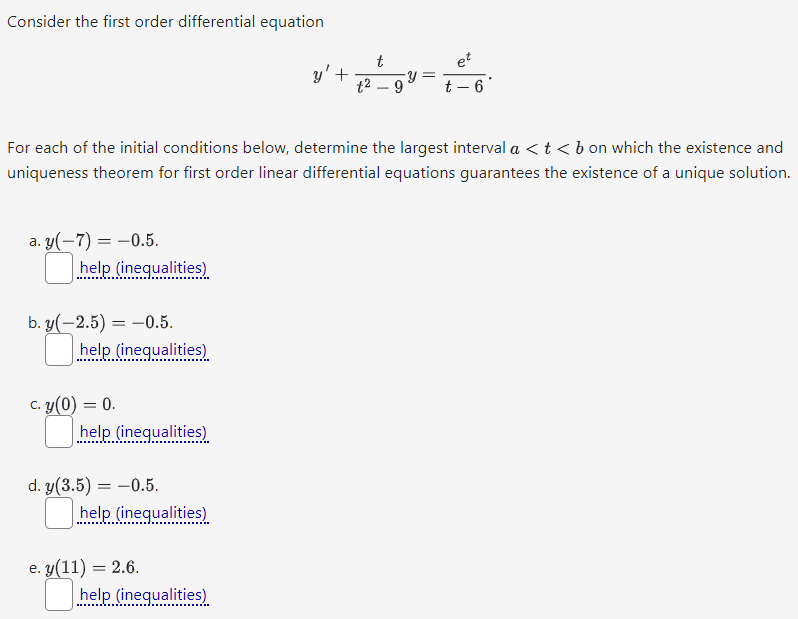Consider the first order differential equation y′ + t t2−9 y = et t−6 For each of the initial conditions below, determine the largest interval a < t < b on which the existence and uniqueness theorem for first order linear differential equations guarantees the existence of a unique solution. a. y(−7) = −0.5. help (inequalities) b. y(−2.5) = −0.5. help (inequalities) c. y(0) = 0. help (inequalities) d. y(3.5) = −0.5. help (inequalities) e. y(11) = 2.6. help (inequalities)
